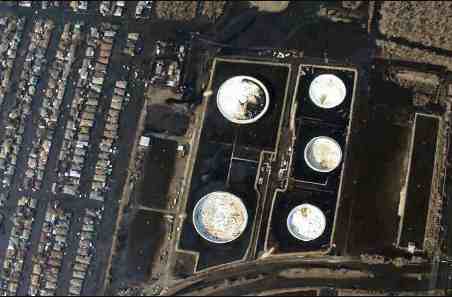
The fate of oil during the first day after an accidental oil spill is still poorly understood, with researchers often arriving on the scene only after several days. New findings from a field experiment carried out in the North Sea provide valuable insight that could help shape the emergency response in the immediate wake of disasters.
It is well known that oil and water don’t mix. Less well known is the fact that when petroleum is spilt onto a water surface, a fraction of the oil immediately begins to evaporate into the air or dissolve into the seawater. These dissolved toxic hydrocarbons can threaten aquatic species, while evaporated compounds may pose a risk to rescue workers or populations downwind of an accident site. Publishing in the journal Environmental Science & Technology, a team of European and American researchers report on a unique study focused on the fate of hydrocarbons during the 24 hours that follow an oil spill.
Following a spill, oil suddenly finds itself in a radically new environment – exposed to light, air, and the water surface after millions of years underground. “In its new environment, the oil immediately begins to change its composition, and much of that change happens on the first day,” explains Samuel Arey, a researcher at EPFL and Eawag in Switzerland and corresponding author of the study. Oil is a complex mixture of many hydrocarbon compounds. Certain volatile compounds evaporate within hours, contaminating the overlying atmosphere. Others, such as toxic naphthalene, simultaneously dissolve into the seawater, posing a threat to aquatic life.
Especially since the Exxon Valdez catastrophe in 1990, which released over 40,000 cubic meters of oil into the ocean, researchers have sought to evaluate to what extent marine species in the vicinity of an oil spill are exposed to toxic hydrocarbons. But this question has largely remained debated, because many of the hydrocarbons are dispersed into the water or the overlying air well before scientists arrive at the site.
In order to collect data on the immediate aftermath of an oil spill, the researchers collaborated with emergency response specialists of the Dutch Rijkswaterstaat to recreate a four cubic meter oil spill in the North Sea, in a shipping zone already burdened by pollutants, 200 kilometers off the coast of the Netherlands. By studying this relatively small oil release, they were able to gain a better understanding of what goes on in much larger spills, with findings that could be useful to assess the risks to underwater life, as well as to emergency response team workers at the sea surface.
No two oil spills are alike. Aside from the sheer volume of oil released onto the sea surface, the environmental impact of an oil spill depends on external factors, such as the wind, waves, and the temperature of the air and the water. The North Sea experiment, for instance, was carried out on a summer day with two-meter high waves. Within just over a day, the surface oil slick had almost dissipated. On a cooler day with less wind and smaller waves, the slick would have likely persisted longer.
Thanks to a computer model that was tested against the data collected in the North Sea, the researchers are now able to extrapolate their findings to larger spills and other environmental conditions. Results from the study will provide the researchers with tools to better assess the immediate impact of future disasters on humans and on the environment, as well as to plan the emergency response, even in settings that differ strongly from those encountered in the North Sea.
The research was carried out in partnership with the Royal Netherlands Institute of Sea Research, the Dutch Rijkswaterstaat, the University of Lausanne in Switzerland, the Helmholtz Center for Environmental Research in Leipzig, Germany, and the Woods Hole Oceanographic institution in Massachusetts, USA.







